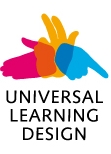Introduction
There are different ways to make fiction and non-fiction books accessible, whether as braille, large print or DAISY audio books. For this structured sources are needed. Structuring a document manually consumes much time.
This document introduces a production software tool kit developed at the German Central Library for the Blind (DZB) in Leipzig. It aims to support structuring complex books both automatically and manually. The goal is to cover 95% of recognition fully automatically leaving the rest for manual improvement. Other aims are accessible tools, OCR improvement, easy editing, media specific labelling, generation of different media and embedment into work flows.
As an example the tools allow to produce HTML pages that can be presented on tablet computers and used in lessons. It is possible to create a fast and comfortable access to non-fiction books at the level of modern means of communication.
Automated structuring
After image preparation and creation of segments using graphical methods they are described by it’s formal properties, like colour, indentation, location, text content etc. Furthermore texts are recognized using standard OCR software. The properties are the base for tagging the segments with substantial meanings like section title or page number. The process is designed to work fully automatically on a server which we call core. The output of the core is a highly structured electronic document which is called LeibniX package. It contains a LeibniXML file holding the structured document as well as figure files for large print, source references etc.
Manual post processing using LEdit
LEdit focuses on editing and improving the LeibniX package. The LeibniXML file is quite complex. To advance the usability to the user the presentation is done using a special notation called Leibnix which is quite similar to Latex notation. For example all attributes are hidden. A Leibnix element can have two different notations. They can be restricted to a special media like braille.
|
cmd[content] |
begin{cmd}
Longer content.
end{cmd}
|
braille:cmd[Content
restricted to
braille.]
|
As an example: while one LeibniXML file has a size of 1,3 MByte the corresponding Leibnix only needs 250 kByte.
LEdit provides a set of primitives on elements and texts: copy, paste, create, raise or lower global titles, mapping, etc. During editing primitives can be combined to more complex working steps which are the base for the editing
workflows.
There are a lot of tools supporting the editor. A document view shows the position and content type, a figure, a source view showing the original book pages and a selection allowing super local corrections. Different views like the HTML output and a hint screen can be easily extended by an LEdit administrator when writing and adding a cmd or XSLT script. Macros are supported by exporting the XML document and reloading the modified one. The document can be exported to formats such as DAISY, HBS (Braille) or others.
Current status
The project is still in development. Usability tests and presentations to different German media producers have shown that the concepts are sustainable. The software is planned to be finished until the end of 2012. Next steps will be the takeover into production, different extensions and improvements. A second usability test will be made in 2013. Planned extensions are interfaces like Daisy 4 export and making LEdit a production tool that can be effectively used by blind and partially sighted people.
Application Leibniz for tablet computers
The tools developed by Leibniz will help to produce non-fiction books for visually impaired people in different media formats. Focuses are adapting the tools with respect to special needs as well as changing requirements. The underlying architecture is designed to be very robust and adaptable to those developments.
The bbs nürnberg, a school and competence-system for pupils and young adults with low vision and blindness in Bavaria/Germany started 2011 a new project which uses tablet computers like the iPad for vocational training.
Uninformed people could have the impression that the iPad cannot be used without sight, but the integrated software “VoiceOver” generates a direct Bluetooth connection to different Braille devices. Also it designs the screen especially for people with low vision (contrasts, font size …)
After half a year of use the iPad proved to provide access to books and information in a fast and very impressive way. The teachers started to give their information via e-books by placing them in the “kiosk”. With it the books can be quickly accessed. Therefore the pupils use the iPads like a book – carrying it always with them.
Here is the very interesting connection between “Leibniz” and the bbs nürnberg. There exists a very big gap to have access to text books on vocational training like office communications which is educated at bbs nürnberg. By using Leibniz tools this gap can be closed in a fast, secure and easy way.









